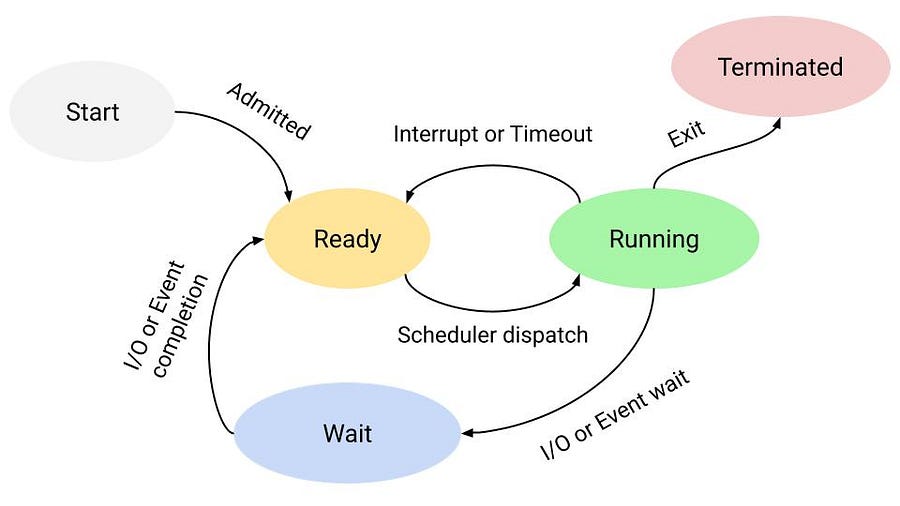Understanding Process Management in Operating Systems
Hey everyone!
Today, I’m excited to share what I’ve been learning about process management.
It’s a core concept in operating systems that helps in to run everything smoothly. Whether you’re diving into computer science like me or just curious about how computers multitask, understanding process management is super important. Let’s break it down in simple terms.
What is Process Management?
At its heart, process management is how an operating system (OS) handles processes. A process is just a program that’s running, like your browser or a game. Every process needs resources—CPU time, memory, and access to files—and the OS decides how to share these resources among all the processes running at the same time.
Without process management, our computers wouldn’t work efficiently or be able to run multiple programs at once.

Why Does Process Management Matter?
I came to know why process management is crucial because:
It shares resources fairly – So no single app takes over everything.
It keeps the system stable – By avoiding resource conflicts and crashes.
It makes multitasking possible – You can stream a video, type a document, and get notifications all at once.
It protects security – Each process is isolated, so one app can’t mess up others.
For example, when I run a code editor and a browser side by side, process management is what makes this smooth without either app freezing.
What Happens in Process Management?
Key parts of process management that I’ve been exploring:
1. Process Creation
Every process starts somewhere! When we open an app, the OS:
Gives it a unique ID (kind of like a name tag).
Allocates memory for it to use.
Tracks everything about the process in a process control block (PCB), like its current state and priority.
For example, when I run my JavaScript code, the OS sets everything up for that process.
2. Process Scheduling
This is how the OS decides which process gets the CPU next. It’s like a queue at a coffee shop, but sometimes, priority matters. Here are some popular scheduling methods:
First-Come, First-Served (FCFS): Processes are served in the order they arrive.
Round-Robin (RR): Each process gets a small time slice before the next one starts.
Priority Scheduling: Higher-priority processes go first.
Shortest Job Next (SJN): The shortest task gets done first.
Scheduling keeps everything moving efficiently. I noticed this when running a heavy app alongside smaller tasks—they all still get their turn!
3. Process Synchronization
Sometimes, processes need to share data or work together. The OS prevents issues like:
Race conditions: When two processes try to change the same data at the same time.
Deadlocks: When processes get stuck waiting for each other indefinitely.
For instance, in a multiplayer game, processes must sync so all players see the same events in real-time.
4. Process Termination
Every process has to end eventually. This can happen when:
The process completes its task.
The process runs into an error (like when my program crashes).
The OS or a parent process decides to terminate it.
When a process ends, the OS cleans up its memory and resources to keep things tidy.
Process Lifecycle: The States of a Process
I found interesting is how a process changes states during its lifetime:
New: It’s being created.
Ready: Waiting for its turn to run on the CPU.
Running: Actively using the CPU.
Waiting: Paused, maybe waiting for user input or a file to load.
Terminated: Finished and cleaned up.
This flow explains why some programs feel “frozen”—they’re stuck waiting for something!
My Takeaway
Learning about process management is important in Operating System. It’s help’s computers to do multitask without crashing or freezing. Every time when we run multiple apps or see how quickly things switch that’s due to process management.
Process management is an essential part of operating systems that keeps everything running smoothly. Understanding how processes are created, scheduled, synchronized, and terminated helps you appreciate how powerful and efficient modern computers are.
If you’re curious about process management or have questions, let’s discuss in the comments!
If you found this blog post helpful, please consider sharing it with others who might benefit. Follow me for more insightful content on JavaScript, React, and other web development topics.
Connect with me on Twitter, LinkedIn, and GitHub for updates and more discussions.
Thank you for reading! 😊


